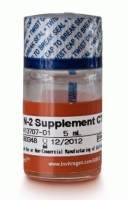Candidate Diseases for Prenatal Gene Therapy
互联网
598
Prenatal gene therapy aims to deliver genes to cells and tissues early in prenatal life, allowing correction of a genetic defect, before irreparable tissue damage has occurred. In contrast to postnatal gene therapy, prenatal application may target genes to a large population of stem cells, and the smaller fetal size allows a higher vector to target cell ratio to be achieved. Early gestation delivery may allow the development of immune tolerance to the transgenic protein, which would facilitate postnatal repeat vector administration if needed. Moreover, early delivery would avoid anti-vector immune responses which are often acquired in postnatal life. The NIH Recombinant DNA Advisory Committee considered that a candidate disease for prenatal gene therapy should pose serious morbidity and mortality risks to the fetus or neonate, and not have any effective postnatal treatment. Prenatal gene therapy would therefore be appropriate for life-threatening disorders, in which prenatal gene delivery maintains a clear advantage over cell transplantation or postnatal gene therapy. If deemed safer and more efficacious, prenatal gene therapy may be applicable for nonlethal conditions if adult gene transfer is unlikely to be of benefit. Many candidate diseases will be inherited congenital disorders such as thalassaemia or lysosomal storage disorders. However, obstetric conditions such as fetal growth restriction may also be treated using a targeted gene therapy approach. In each disease, the condition must be diagnosed prenatally, either via antenatal screening and prenatal diagnosis, for example, in the case of hemophilias, or by ultrasound assessment of the fetus, for example, congenital diaphragmatic hernia. In this chapter, we describe some examples of the candidate diseases and discuss how a prenatal gene therapy approach might work.









